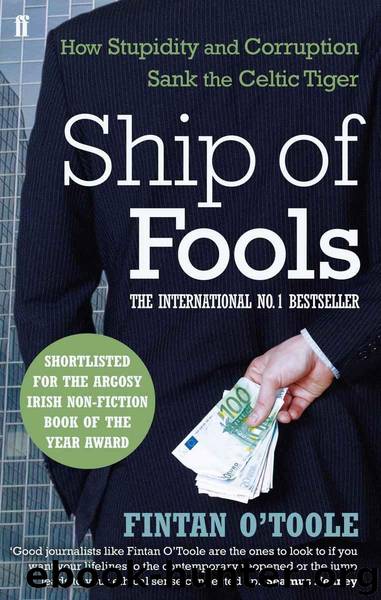Ship of Fools: How Stupidity and Corruption Sank the Celtic Tiger by O'Toole Fintan

Author:O'Toole, Fintan [O'Toole, Fintan]
Language: eng
Format: mobi
ISBN: 9780571258727
Publisher: Faber & Faber
Published: 2009-11-25T16:00:00+00:00
These were, almost without exception, state subsidies for the rich. Indecon, from whom the government eventually commissioned an analysis of the property-based tax incentives, concluded that ‘nearly all of the property tax incentives reviewed have been used primarily by high income earners’. None was introduced as a result of a cost/benefit analysis. None was time-limited, so that incentives that might perhaps make some sense at a particular moment continued to operate long after they were remotely justifiable.
What the incentives did achieve, however, was to help turn Ireland from a society in which construction serviced the economy into one in which the economy existed to service construction. In May 2009, in a half-hearted excuse for an apology, the Taoiseach Brian Cowen, who had been a pitifully compliant minister for finance during the worst of the bubble years, regretted the ‘reliance on the construction sector, which had grown to 12% of GDP’. This in itself was an interesting example of Freudian repression. The construction sector wasn’t 12 per cent of GDP. It was, at the height of the boom in 2006, almost 24 per cent of GDP. This was twice the average ratio for Western Europe. It directly accounted in 2006 for 19 per cent of the entire workforce. In other words, a quarter of all the economic activity in the state was the manipulation of bricks and mortar, concrete and tarmac. One person in five was employed in building the houses, roads, office blocks and infrastructure for the other four to live in, work in and travel through.
The height of absurdity was reached in the last years of the boom when Ireland was importing construction workers from Central and Eastern Europe to build the houses in which they themselves would live. In 2006, 13 per cent of the workforce in Irish construction was made up of migrant workers. Many builders were relying on these workers to rent the houses the last wave of migrant workers had built, while they themselves built the houses for the expected next wave of central European builders to rent.
Faced with this looming disaster, and its implications for the stability of the banking sector, the Central Bank stood on the sidelines wringing its hands. Its own figures, published in its annual stability reports, were terrifying: bank lending for construction and real estate grew from €5.5 billion in 1999 to €96.2 billion in 2007 – an increase of 1,730 per cent. On average, this lending was growing by 18 per cent a month. Even if the Irish regulators didn’t concern themselves with awkward things like ethics and legality, they were supposed to be in the business of risk management and banking stability. That the pace and scale of this rise in lending to one sector of the economy met with no real regulatory response suggests a mass migration to the Republic of Catatonia.
In May 2009, Brian Cowen claimed that he and the government had been well aware all along that construction and property had become cuckoos in the economic nest and had been planning to tackle the problem.
Download
This site does not store any files on its server. We only index and link to content provided by other sites. Please contact the content providers to delete copyright contents if any and email us, we'll remove relevant links or contents immediately.
International Integration of the Brazilian Economy by Elias C. Grivoyannis(90624)
The Radium Girls by Kate Moore(11921)
Turbulence by E. J. Noyes(7935)
Nudge - Improving Decisions about Health, Wealth, and Happiness by Thaler Sunstein(7613)
The Black Swan by Nassim Nicholas Taleb(7009)
Rich Dad Poor Dad by Robert T. Kiyosaki(6398)
Pioneering Portfolio Management by David F. Swensen(6226)
Man-made Catastrophes and Risk Information Concealment by Dmitry Chernov & Didier Sornette(5921)
Zero to One by Peter Thiel(5684)
Secrecy World by Jake Bernstein(4640)
Millionaire: The Philanderer, Gambler, and Duelist Who Invented Modern Finance by Janet Gleeson(4374)
The Age of Surveillance Capitalism by Shoshana Zuboff(4208)
Skin in the Game by Nassim Nicholas Taleb(4161)
Bullshit Jobs by David Graeber(4094)
The Money Culture by Michael Lewis(4073)
Skin in the Game: Hidden Asymmetries in Daily Life by Nassim Nicholas Taleb(3929)
The Dhandho Investor by Mohnish Pabrai(3698)
The Wisdom of Finance by Mihir Desai(3649)
Blockchain Basics by Daniel Drescher(3495)
